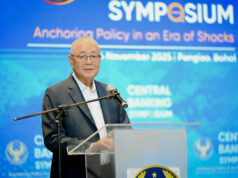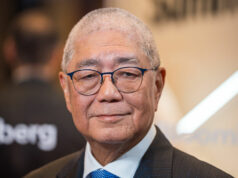Banks mark Q2 with higher profitability despite slower asset and loan growth
By Christine Joyce S. Castañeda
Senior Researcher
THE COUNTRY’s biggest banks saw their profitability and capacity to absorb risky assets improve last quarter, even as growth in assets and loans slowed.
The second quarter edition of BusinessWorld’s Quarterly Banking Report showed the combined assets of 46 universal and commercial banks (U/KBs) grew 9.71% to P16.888 trillion in the April-June period from the P15.394 trillion posted in the same period last year.
Asset growth in the second quarter was slower than the 10.91% recorded in the first quarter and 9.85% in April-June 2018.
Money lent by banks in the form of loans and receivables totaled P9.272 trillion, 10.25% more than the P8.41 trillion last year.
However, the second-quarter figure marked a deceleration from loan growth rates of 12.38% in the first quarter and 18.18% in the second quarter of 2018.
In terms of profitability, the median return on equity (RoE) on these big banks improved to 9.13% from 8.05% in the first quarter and 6.38% last year. RoE — the ratio of a bank’s net profit to shareholder equity — measures how well a company makes use of money from shareholders to generate income. Put another way, it measures the amount that shareholders make on every peso they invest in a company.
BDO Unibank, Inc. (BDO) continued to have the most assets among U/KBs, followed by Metropolitan Bank & Trust Co. (Metrobank) and the Bank of the Philippine Islands (BPI).
They are also the banks that issued the most loans during the quarter, also in that order.
Among banks with assets of at least P100 billion, the Philippine National Bank (PNB) topped in terms of growth, increasing 23.72% year-on-year. It was followed by East West Banking Corp.’s 22.17% and Asia United Bank Corp.’s (AUB) 20.07%.
The same three months saw the Development Bank of the Philippines as the most aggressive lender, with a year-on-year growth of 33.52%, followed by those of the Bank of Commerce’s (BOC) 27.21% and AUB’s 18.94%.
In terms of deposits, BDO remained on top with P2.398 trillion, followed by BPI’s P1.661 trillion and Metrobank’s P1.624 trillion. AUB saw the fastest growth in deposits with 20.16% while the deposits of BOC and PNB grew by 16.89% and 15.27%, respectively.
ASSET QUALITY
Meanwhile, the U/KBs’ ability to absorb losses from risk-weighted assets improved as their median capital adequacy ratio (CAR) — a measure of bank solvency — rose to 19.5% from the 18.84% seen in the preceding quarter.
The ratio remains well above the regulatory minimum of 10% set by the Bangko Sentral ng Pilipinas as well as the international minimum standard of eight percent.
On the other hand, the U/KBs’ nonperforming assets ratio, or nonperforming loans and foreclosed properties in proportion to total assets, edged up to 0.74% from 0.7% in the first quarter and 0.66% in the second quarter of 2018.
Their nonperforming loan (NPL) ratio likewise worsened to 1.58% from 1.53% three months prior and last year’s 1.50%.
The banks’ coverage ratio, which is the ratio of the total loan loss reserves to gross NPL — stood at 113.2% in the second quarter. This was lower than the 117.67% in the preceding quarter and 143.6% in the same period last year, but still enough to cover the entire value of bad loans held by big banks, with loan loss reserves totaling some P162.774 billion.
Since 1987, BusinessWorld has been tracking the quarterly performance of the country’s largest lenders based on their published statements of condition.
The report ranks these lenders in terms of the size of their balance sheet and presents other key ratios used in measuring bank performance such as capital adequacy, earnings and liquidity.




